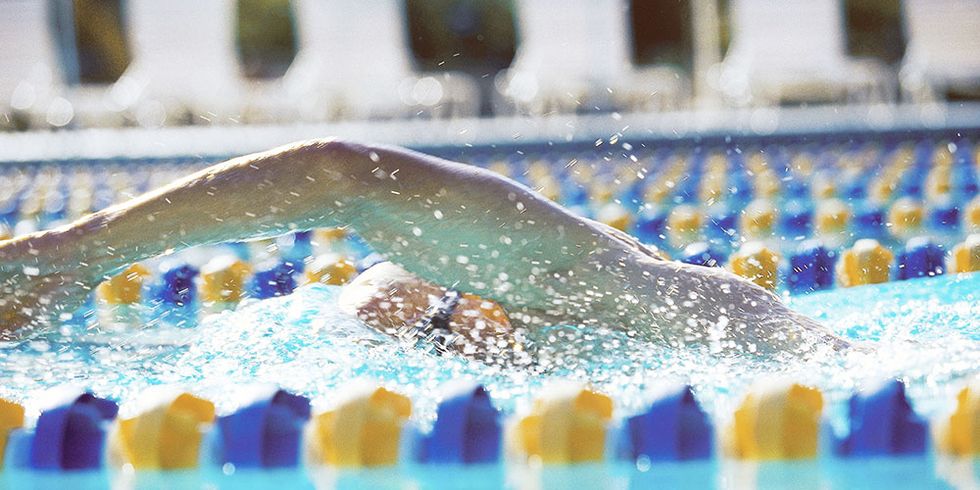
Cara asks: I’m considering adding swimming to my training this season. Do you have any suggested workouts that are good for runners?
Whether the goal is to add variety to your training routine or practice for a triathlon, swimming can provide a host of benefits for runners. Swimming is a low-impact, whole-body workout that mobilizes all the muscles and joints through varied movement patterns. Runners can use the following swimming workouts to promote weight loss and wellness, to prevent or rehab injuries, and to improve overall fitness.
Drills and Strokes Workout
If you’re new to swimming, a great way to get started is to invest time in learning the fundamentals. This helps you avoid ingraining bad habits. At the top of the list is to learn how to breathe, float, flutter kick, breaststroke kick, and tread water.
From there, the breaststroke is one of the easiest to learn. In the beginning, you can keep your head above water the entire time while learning to get comfortable in the water. As you gain confidence and skills, you can advance this stroke and bring your head under the water, and then move on to learning the backstroke and finally the freestyle. Sign up for a swimming class or find a video resource to visualize these drills and strokes. A little practice and know-how will provide the base for progress in the water.
Active Recovery Swim Workout
Swimming is a great activity to do in between hard running workouts. By keeping the effort and time easy and short and giving your body a break from the intensity and impact of running, you promote recovery and set yourself up for your next hard day.
Start with 10 minutes of drills (like flutter kick with a kickboard or breaststroke kick holding on to the edge of the pool), then do 20 to 30 minutes of swimming at an easy effort. As you gain swimming fitness, you can increase the time and vary the strokes as long as you keep the effort easy. It’s also motivating to perform an initial swimming assessment by timing yourself swimming one lap at an easy effort and then keeping track of your improvement—you’ll likely speed up without working any harder over time.
Interval Training Workout
As you gain swimming skill and fitness you can add higher-intensity intervals to boost fitness and strength. Start with 10 minutes of drills and easy-effort swimming to warm up. Swim harder-effort intervals for one length of the pool (typically 25 meters), followed by rest until you’ve caught your breath, four to six times. Build up slowly to longer-distance intervals (a lap) six to eight times.
Just Keep Swimming Workout
Lengthen the distance and swim at a moderate or comfortably hard effort to build stamina and lung capacity. Start with 10 minutes of drills and easy-effort swimming to warm up. Swim 100 meters (four to eight lengths of the pool, depending on its size) followed by two minutes of rest. Start with two to three repeats and gradually build the repeat distance to 200 meters. Mix it up by using a different stroke for each length for an extra challenge.
Just Keep Swimming Workout
Running in deep end of the pool using a floatation belt is a great way to simulate running without impact. You can start out easy for the first few workouts and then build to performing your running workouts against the resistance of the water.
Perform a tempo workout by going easy for 10 minutes, picking up the speed and effort for 15 to 20 minutes, and finishing with 10 minutes at easy effort. Run intervals by running at a hard effort across the deep end of the pool and then resting to catch your breath. Every land-based workout can be simulated in the pool.